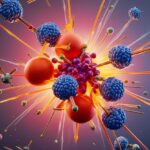Credit: Pixabay
Unseen Threats: The Hidden Dangers in Our Water
When we think of pollutants in our drinking water, we often imagine pesticides or fertilizers. However, a recent study has uncovered a lesser-known culprit: inactive ingredients in herbicides. These substances, though not intended to be active, can transform into harmful compounds during water treatment processes, posing potential health risks.
What Are Inactive Ingredients?
In herbicide formulations, active ingredients target weeds, while inactive ingredients, such as amines, serve various roles like enhancing solubility or reducing drift. These amines, though considered inert in the product, can react during water treatment to form nitrosamines—a class of compounds linked to serious health issues, including cancer.
The Study: A Wake-Up Call
Researchers at Washington University in St. Louis, led by graduate student Jean Brownell and Professor Kimberly Parker, analyzed the impact of herbicide components on water safety. Their findings, published in Water Research, indicate that amines from herbicides might be more significant contributors to nitrosamine formation than previously recognized. This is especially concerning in regions with high herbicide usage, where these compounds can enter water systems through runoff.
Implications for Water Treatment
Traditionally, water treatment facilities focus on removing known contaminants. However, the discovery that herbicide byproducts can form during treatment suggests that existing processes may need to be reevaluated. This revelation underscores the importance of adapting water safety measures to address emerging threats.
Looking Ahead: What Can Be Done?
This study serves as a reminder of the complexities in ensuring clean drinking water. It highlights the need for continuous research and adaptation in agricultural practices and water treatment technologies. By understanding and mitigating the risks associated with herbicide byproducts, we can better protect public health and the environment.










